- China persists with COVID Zero policy
- US consumer confidence falls
- Spanish inflation hits record
- UK GDP figures are published on Thursday.
- On Thursday, the core PCE price index is printed.
- US initial jobless claims are released on Thursday.
Key Events
Renewed recession fears sent global stocks and futures on the Dow Jones, S&P 500, NASDAQ 100, and Russell 2000 lower on Wednesday.
The dollar moved higher.
Global Financial Affairs
Investors' sentiment has turned sour following dreary US consumer confidence data yesterday and the news that although China reduced the quarantine time for inbound travelers, its strategy for mass testing requirements and lockdowns if there is a breakout of COVID mean the economy there remains on tenterhooks.
All four US contracts were in the red, with Russell futures leading the drop.
Europe's STOXX 600 Index opened down 0.4% and has slipped further ending a three-day rally—its first since May 30.
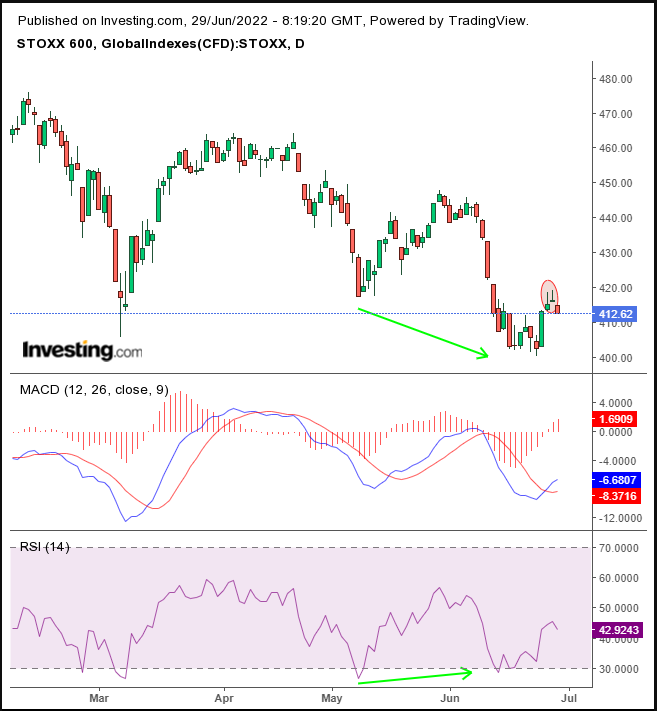
While indicators leave room for a continued rally, bulls must first clear any pockets of resistance left by the March and May lows.
The RSI provided a positive divergence, as momentum increased despite falling prices between the May and June lows. However, back-to-back Shooting Stars provide a bearish snapshot.
Germany's DAX weighed on the continent-wide gauge, falling 1.2% ahead of inflation data which showed annual inflation fell to 7.9%. The release failed to boost the index and it fell further
The DAX's underperformance is manifested on the chart.
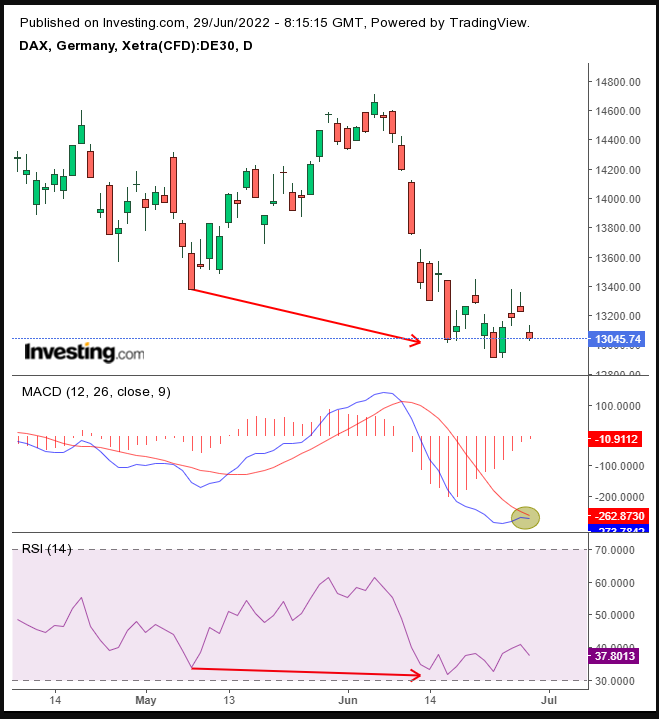
Gone is the positive RSI divergence we showed on the pan-European STOXX 600. Also, unlike the STOXX's MACD, the DAX's MACD has failed to provide a bullish cross, with the short MA climbing over the long one.
Still, traders should keep an eye on how the Spanish market might impact the European economy, as Spanish inflation catapulted to a record and unexpected high of 10.2%. This will put further pressure on the ECB as it was hoped that rising costs in the eurozone's fourth largest economy had peaked. Spain's IBEX 35 opened 1.1% lower and has slipped.
The European STOXX 600 Basic Resources dropped 1.5% on the news from China and renewed concerns for a global downturn.
The world's second biggest fashion retail H&M (ST:HMb) jumped after posting a 33% growth in quarterly profit, beating expectations, as shoppers returned in droves after the COVID lockdown restrictions were removed.
Except for Australia's ASX 200, all major Asian benchmarks opened lower, reflecting Wall Street losses yesterday on the renewed inflation fears. Nevertheless, it still closed 0.94% lower, ending a four-day rally. Australian banking stocks rebounded to a 0.3% gain, capping losses, perhaps after the country's retail sales data suggest demand is resilient amid surging inflation and rising interest rates.
Hong Kong's Hang Seng underperformed, dropping 1.86%.
US shares tumbled yesterday, with big tech leading declines. After rising four out of the past five sessions traders were hoping a bottom had been reached. However, the slide in the Conference Board's index from 103.2 to its 98.7, its lowest in 16 months dented sentiment.There is a divergence in how US and Australian consumers are responding to inflation, maybe because US inflation is over 3% higher than Australia's
However, the Australian dollar is falling versus the US dollar for the third straight day and looks like it will keep falling.
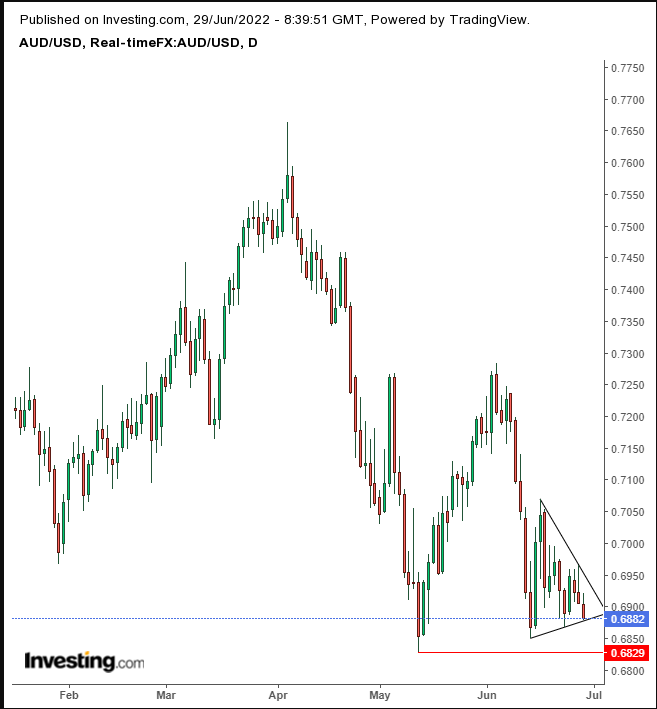
The currency is testing the bottom of a bearish triangle, which developed as traders sought direction upon reaching the May lows. A downside breakout will settle any indecision.
Investors increased their Treasury holdings pushing yields on the 10-year note lower for the second day.

However, yields may have completed a Falling Flag, bullish after the preceding rise. If rates move above 3.25%, we can expect to see them revisit the 3.5% before resuming higher.
The dollar climbed for the second day, extending yesterday's most significant jump of the week.
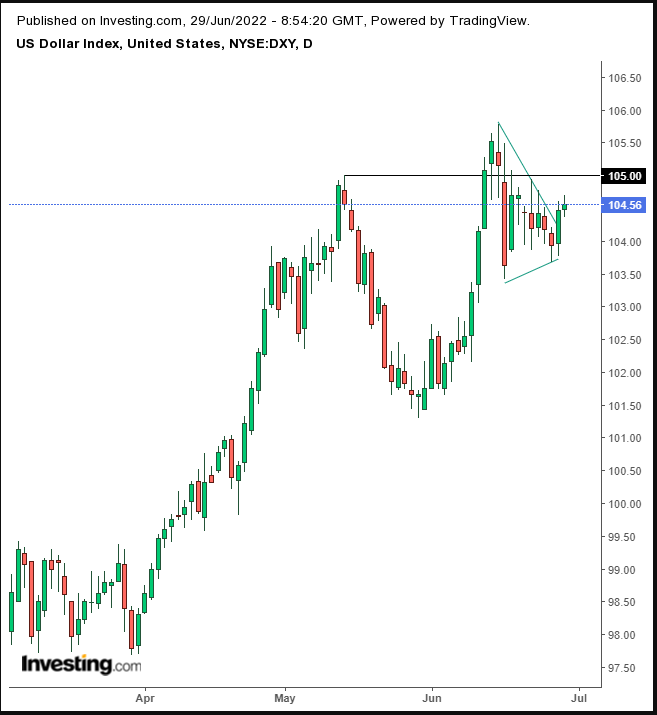
The greenback may have completed a bullish pennant, crucial to extend the uptrend and avoid a Double Top, with a fall below 101.30, the May 30 low.
Gold fell for the third straight day
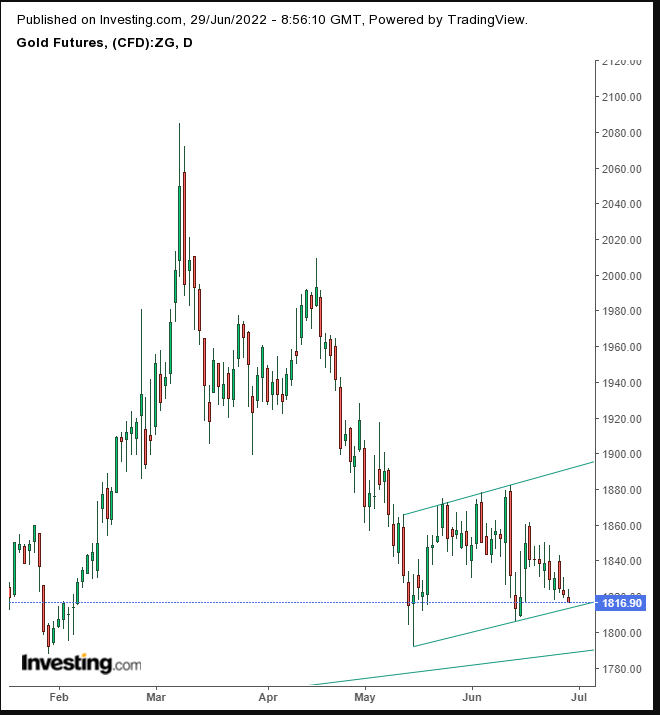
The price is testing the bottom of a recently formed Rising Channel, which bounces off the uptrend line since the infamous Mar 2021 bottom, after the virus's first wave.
Bitcoin remains around $20K, a closely watched price level.
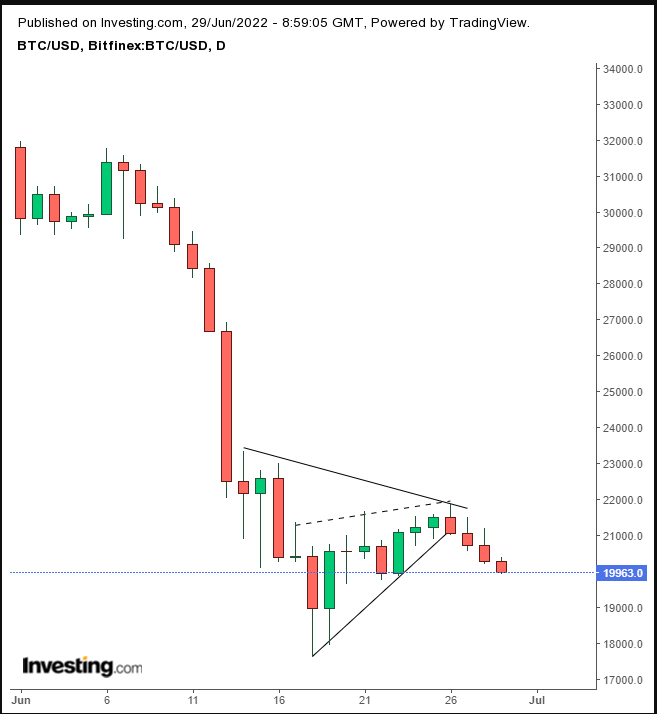
The cryptocurrency is falling for the fourth straight day, as it may have completed a bearish continuation pattern, perhaps prepared to follow through with much bigger technical moves lower.
Oil slipped but then recovered.

WTI found resistance by the June 21 high.
